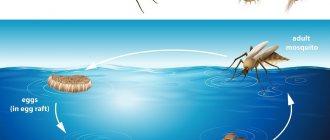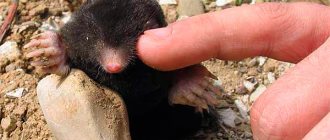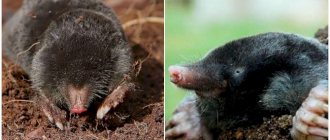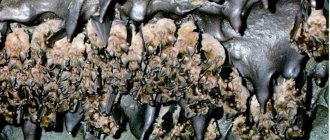Next you will learn:
- Do moles hibernate like many other animals, or is this a myth;
- How moles winter, and what helps them survive the cold season;
- Do moles store food for the winter and continue to dig under the snow in search of new food;
- Is it worth leaving mole protection on the site for the winter, or does it not make sense?
...And also a number of other interesting nuances regarding the wintering features of moles.
Winter is a very difficult period for moles - during the cold season, these animals have to mobilize all their resources in order to survive, so they carefully prepare for wintering. However, even despite this, in some years many moles die without surviving until spring.
For many gardeners and owners of a summer cottage, the question of how exactly a mole overwinters is of practical importance, allowing you to competently organize the protection of a garden or a resting garden from these animals - we will also talk about this a little later.
Kinds
There are currently more than 30 different species of moles. The main four types that are quite common are:
- Blind mole (small);
- Caucasian;
- Siberian;
- European.
Because they spend most of their time underground, they have very small eyes and ears that are almost entirely covered in fur. Their most distinctive feature is their powerful paddle-shaped front end with large, thick toenails that they use to dig their tunnels.
Let's take a closer look below:
- Do moths hibernate;
- What helps moles survive in the cold season;
- Are they able to collect supplies for the winter and continue to dig under the snow in search of new food?
We protect our possessions
Since moles are active in winter and their lifestyle remains almost unchanged, summer residents and gardeners are not happy with such a neighborhood.
What harm does this little animal cause:
- destroys beneficial earthworms in a state of suspended animation;
- underground passages violate the integrity of the garden;
- breaking through new passages, they cause damage to wintering plants, for example, garlic, onions, beets, etc.
In the cold season, under the snow, this activity is not noticeable, but it will become a big unpleasant surprise in the spring.
Therefore, in order to protect your garden from uninvited guests, it is recommended to leave ultrasonic or homemade repellers on all winter. In addition, it is worth keeping traps, nets and trenches against moles for the winter.
- Author: Maria Sukhorukikh
Rate this article:
- 5
- 4
- 3
- 2
- 1
(0 votes, average: 0 out of 5)
Share with your friends!
Video at home “What does a mole do in winter”
Owners of large plots of land on which crops are grown often have problems due to the appearance of moles. Since these animals complicate the growth of cultivated plants in summer and autumn, there is nothing to harm them in winter, but gardeners are interested in whether moles hibernate in winter. In this article we will provide information about how moles overwinter, how they hibernate, what they do in winter, what they eat. Contents
- 1 What is hibernation in moles
- 2 Video at home “What does a mole do in winter”
- 3 How he lives
- 4 What does it eat?
- 5 Video at home “Life activity of the common mole”
From the video you will find out what this animal does during the cold season.
From the video you will learn how this animal lives.
Bees: no sleep and no days off
These insects also do not sleep in winter. Mospriroda specialists said that some kind of process is constantly going on in the hives. So, in the headphones of a phonendoscope attached to the entrance of the hive, the quiet hum of bees can be clearly heard. If the hum is quiet and even, then wintering is going well.
Hardworking bees begin to prepare for winter in the spring. By collecting nectar, they not only make honey for food, but also store most of it for the time when the honey plants will no longer bloom. Closer to autumn, the queen begins to reproduce more actively. Working bees collect nectar from the last honey plants and seal all the cracks in the hive with propolis so that in winter there is no draft inside the home. With the first frost, the bees drive the drones out of the hive and stop flying. They gather in a dense club, in the center of which is the uterus. Now their main task is to warm each other due to the active work of their wings, eat the stored honey and survive until spring.
In winter, the temperature in the center of the club varies between plus 15–20 degrees, while the temperature outside can reach minus 30. It is wintering side by side that helps hardworking bees stay warm all winter and fly out in the spring to collect nectar from the first honey plants.
The myth about hibernation of moles
Many homeowners assume that moles hibernate and are not active during the winter months, but this is not true. Their main permanent tunnels and nesting burrows are dug deep underground below the frost line, allowing the mammals to remain active during the cold winter months. In winter, they stop digging surface tunnels in the soil as the ground freezes. Since people cannot see these surface tunnels, they believe that the moles are hibernating and are not causing damage to their lawns, gardens, or gardens.
In winter, moles do not hibernate because they cannot store fat on their bodies, since it is quite cold outside. Instead, they follow earthworms deep into the ground to stay warm and well fed during the cold winter months. Afterwards, they lie patiently waiting for the warm weather to return and appear like clockwork to continue its vicious cycle of wreaking havoc in yards and gardens everywhere.
To rid your garden of moles, you need to choose a specific method of fighting them. Before doing this, you should carefully read the various methods and know all their advantages and disadvantages. Some will choose to fight the invasion of these animals with store-bought tools. Someone will decide to use popular folk remedies that you can make yourself.
Do moles sleep at all?
Like other animals, moles sleep to recuperate. Only they do this in a completely different way than a person is accustomed to, and therefore sometimes it may seem that the mole is not sleeping at all.
Moles sleep 5-6 times a day for 60-90 minutes. To sleep, the animal usually moves from the feeding passages to the nesting chamber, which is well equipped and insulated, here it takes care of its fur, and the female feeds and raises her offspring here in the summer.
This is interesting
The mole “goes to bed” curled up into a ball, like a cat. This way it reduces heat loss through the stomach and paws.
The animal does not have a strict daily activity schedule. His dungeons are constantly in darkness, and he doesn’t care when to hunt or sleep - at night or during the day. Therefore, the animal sleeps, feeds, and burrows in the ground at approximately the same frequency at any time of the day.
In general, in winter the mole sleeps more often and longer than in summer. This allows him to save energy and recover better between energy-intensive work on constructing a new move. But even at this time, the animal does not rest for more than 2-3 hours - given its gluttony, during this time it manages to get very hungry, and is forced to run back into its tunnels to look for food.
An interesting video with an example of how a mole searches for food under the snow in winter
Let's get to know the digger better
The mole is a representative of insectivorous mammals, adapted to a burrowing, underground lifestyle. Depending on the species, the body size of this animal varies from 5 to 20 cm.
A few words should be said about the peculiarity of his fur coat. The mole's pile is short, soft, grows straight and lies freely in different directions, which allows the little animal to move freely underground in any direction.
The animal sets up a nesting chamber at a depth of up to 2 meters and insulates it.
Field mice: nimble and resourceful
In the natural areas of Moscow, field mice are quite common - small and very active animals with a noticeable black stripe running along the entire back. They usually live in burrows that have several entrances, and the length of the passages can reach several meters.
These rodents are usually active at night, although they can be seen at almost any time of the day. Field mice can walk several hundred meters a day and go far from their burrows. Where the animals usually feed, they dig small burrows in which they quickly hide in case of danger. Such burrows can be seen not far from the feeders that are installed in parks.
In natural areas, field mice can almost always find sufficient food. The animals feed on berries and plant seeds, young shoots and rhizomes. They can also eat invertebrates.
Are there any benefits to mole tunnels?
Moles dig tunnels and nest in the deep depths of the earth (they will not be visible on the surface of the earth). In addition, they also dig shallow tunnels beneath the surface of the earth on a daily basis as they search for earthworms and insects to feed on. Thanks to this, they rid the garden of pest larvae. When people see such tunnels, they immediately associate them with shrews.
Moles do not reuse these temporary tunnels and simply continually dig new ones every day in search of food. Unfortunately, this habit causes great damage to your lawn and garden. Since while digging a new tunnel, these cute animals harm the root system of vegetable and garden plants.
Should the site be protected from these animals in the winter?
From the above, it becomes clear that in the garden and at the dacha, the mole leads almost the same way of life in winter as in summer - well, except that the animal is almost invisible to the eye, since its activities are largely hidden by the snow cover.
However, although the harmfulness of the animal decreases at this time, the animal still continues to be an unwelcome guest:
- In winter, the mole continues to destroy beneficial earthworms (inactive and in suspended animation);
- The animal continues to dig underground passages, although in smaller volumes and at a reduced speed. In the spring, all this snow-covered activity will appear, especially when digging up the garden;
- When making new tunnels, the mole continues to spoil the plantings of vegetables overwintering in open ground - onions, garlic, beets. It also harms flower beds and flower beds.
In addition, in winter, moles from neighboring areas can enter the garden in search of food. And if they like it here, the animals will not fail to settle for permanent residence.
On a note
In many areas, moles appear not in winter, but in the second half of autumn. At this time, the owners of the plots have already managed to harvest the crops and do not notice that diligent diggers have begun to work underground. In the spring, when tunnels, molehills or even damaged beds with wintering crops are discovered, many people think that the moles appeared here precisely during the winter - after all, it would seem that they were not seen in the fall...
Taking all this into account, mole repellers (both ultrasonic and homemade) should be left on the site for the winter. You also need to keep other means of protection here: anti-mole trenches, mole netting, trapping cups.
What does it eat?
In winter, the mole cannot hibernate, so it needs to eat normally in order to maintain the normal functioning of its body.
For an animal to feel full, it needs to consume at least 80-90 grams of food per day. Without food, an adult mole can live up to 18-19 hours, and babies even less. Therefore, these pests are constantly looking for a place where they can find food.
It is generally accepted that it is the feeling of hunger that increases the activity of the animal, both in the spring and with the onset of cold weather. Digging out a large number of underground passages, this mammal spends a lot of strength and energy.
As at any other time, the diet consists of earthworms, various insects, as well as their larvae, beetles, snails and similar living creatures.
A mouse or shrew can get into the wide branching system. They often use passages that were dug by a predator. If she finds herself in a dead end, she will become food for the mole. It can also eat rodents that have died from starvation, since these animals can also eat carrion.
Despite the big appetite of the burrowing animal, it is able to prepare food for itself for the winter. Earthworms are used primarily for harvesting. The mole bites off the head of the worm, and the back part remains lying in its tunnels. Sometimes separate rooms may be used to store supplies. Otherwise, throughout its entire system of underground passages there will be remains of worms, which the predator will eat if there is a shortage of food.
After conducting research, scientists carefully studied the approach of these animals in preparation for wintering. More than five hundred stored worms were discovered, which were found in the mole's nest or tunnels. Of course, this will not be enough for the animal to feed all winter, but it will make it much easier for him to survive during cold weather for some time, since it is difficult to find food in winter.
How does a mole overwinter and what does it do in the cold season?
First of all, let us remember that a mole is an animal that leads a predominantly underground lifestyle. In the warm season, it sometimes gets out of the dungeon through molehills, but in winter, even having made its way to the surface of the earth, it usually remains under the snow (it rarely crawls out from under it - see the example in the photo below).
Under a layer of snow and earth, even at a relatively shallow depth, it will be noticeably warmer than on the snow surface exposed to the winds. This means that the heat loss of an underground inhabitant will be less than that of animals living on the surface of the earth. The same hedgehog, for example, will freeze mercilessly in winter, while in the underground passages of the mole the air is significantly warmer than outside. This greatly helps moles survive even very cold winters.
It is also useful to read: Do moles have eyes and do these animals need vision underground?
Moles overwinter in the same areas where they spend the summer. Just like in the summer, they periodically dig tunnels, actively move along them and continue to constantly search for prey all day long, including collecting those worms that they left here in reserve during days of abundance. As in the warm season, after satiation, the animal returns to one of several expanded chambers in which it rests.
Sometimes in winter the mole makes passages under the snow, along the very surface of the soil through the leaf cover. This may be rational, since it is under the leaves that a large number of insects and their larvae overwinter, from which the animal can profit.
In winter, moles dig passages in the snow itself, thereby forming outlets for their branched system of underground tunnels.
In winter, moles live at almost the same depth as in summer. This is due to the specifics of creating the passages themselves: at a depth of more than half a meter, they can no longer lift a layer of dense soil above themselves, and each portion of the excavated earth has to be pushed with their hind paws towards the molehill, lifted to the surface and thrown out. If at a depth of up to half a meter the animal is still somehow able to do this titanic work, then from a greater depth raising the earth becomes problematic (energetically unprofitable). Only in rare places do moles arrange nesting chambers at a depth of up to 1 meter.
The main number of mole hunting passages in winter are located at a depth of 5-10 cm below the soil surface. In fact, the mole overwinters at this depth, spending most of its time here, and only a few times a day climbing into the deeper parts of the passages to sleep and rest.
In years with frosty and little snowy winters, the soil at this depth freezes, it becomes more difficult to find food, and the construction of new tunnels further exhausts the animal. In such winters, moles often die en masse from lack of food.
On a note
But the mole is not afraid of frost. Partly due to the warm fur, partly due to the lack of wind and smaller temperature changes in the underground passages. The main enemy of an animal in winter is precisely hunger.
When is the best time of year to catch moles?
These animals can be captured at almost any time of year and in most weather conditions. There is no specific time when they are easier to catch. Moles dig the same way at any time of the year, but they tend to be more active during the spring, summer and fall. When moles are more active, they use their runs more often and therefore have a greater susceptibility to being caught in a set trap.
The most terrible enemy of a gluttonous mole is hunger. Lack of supplies is the main cause of death for these mammals in winter.
The main methods used to combat moles are:
- Tin can noisemaker;
- Plastic, glass bottles with an open neck;
- Ultrasound;
- Filling the tunnel with water;
- Ammonia, kerosene, castor beans;
- Net.
Features of digging holes and passages
Animals dig underground passages for food. This is a complex deep network of multi-level galleries. Depending on their purpose, tunnels are of two types:
- feed;
- residential.
In summer, the first ones are not located too deep - up to 5 cm. In cold times - deeper. Narrow and long feeding tunnels provide some kind of bait for worms. They are attracted by the musky smell of animals. Feeding passages can cover an area of hundreds of square meters. And during the night the animal is able to dig a tunnel up to 60 m long. In this case, there is no release of soil to the surface. Moles only lift a layer of earth above themselves.
Residential tunnels - from 20 cm and deeper. The animals use them to move from the nesting chamber to feeding areas or watering places. Sometimes a deep mole hole has access directly to a pond. The animals are good swimmers and can even swim across a small river.
The nest, as a rule, is located in a safe place (among the roots, under snags) at a depth of up to 2 m.
In open areas with drier soil, the depth of mole burrows is no more than 50 cm.
By digging deep tunnels, insectivores throw up small piles of soil - mole hills. These earthen mounds can be especially large above the network of nesting tunnels - about 80 cm.
The mole does not hibernate and is active all year round. The animal overwinters in the same places where it spends the rest of the time, without moving in search of a new home. We can say that his life in winter is not much different from the summer: he still digs tunnels in search of food.
The only difference is that the main part of the tunnels in winter is located at a depth of approximately 10 cm.
Here is food for the animal - various worms and larvae. The mole goes deep underground just to rest.
Often the animal digs passages directly under the snow cover and even in the snow itself, making holes for its multi-level network of passages.
Ways to fight
The easiest way is to fill the mole holes with water. Of course, in this way you can remove the mole from the garden, but only for a couple of hours, until the mole digs a new tunnel next to the flooded one. The second method, more effective than the first, is to put pressure on the mole’s strong sense of smell and drive it out with the help of pungent odors.
We suggest you read: What does a vole eat: in a meadow, forest, steppe or taiga, is it a herbivore or an omnivore?
To do this, you can use kerosene, mothballs, castor oil and even rotten eggs, anything that gives off an unpleasant odor. For example, you can dilute kerosene in one hundred grams of hot water, wet a rag with it and plug all the mole holes that you can find with it.
But the most effective way to drive moles out of the area is with the help of special ultrasonic devices, which can be bought in specialized stores. The essence of the device is simple: it emits ultrasound, which is unpleasant to animals, which is why moles will be forced to leave the area within the shortest possible time. The only disadvantage of this method is its cost, because such devices are by no means cheap.
Where do they live?
The animals live mainly in humid areas: river floodplains, forest edges, meadows, river valleys. Moles cannot chew soil, like rodents. Therefore, they usually settle in soft, loose soil. Very often they appear in our gardens and vegetable plots.
Animals feed on small invertebrates - mainly earthworms, to a lesser extent woodlice, centipedes, spiders, chafer larvae, caterpillars, etc. Sometimes they can even attack a mouse or lizard if they are motionless.
Thanks to their fast metabolism, the animals are very insatiable and within a day they are able to eat an amount of food that is not much less than their own weight. They can remain without food for no more than 17 hours.
Why do moles create tunnels and hills?
Moles create tunnels for two purposes, traveling and feeding. Passing tunnels are pathways between feeding areas and the bottom. Feeding areas are usually marked by clusters of mounds and shallow tunnels. Their goal is to help the mole hunt for its main diet, worms. The mounds or "mole hills" are excess dirt that has been mined by the jetty to create these tunnels.
Pest or not?
Does it make sense to drive moles out of your area? Before answering this question, it is necessary to analyze the pros and cons of the appearance of moles on the site.
So, the advantages include:
- The fact that moles contribute to loosening and increased aeration of the soil cover.
- The fact that moles eat all the pests that can live in the gardener’s soil. All possible grasshoppers, mole crickets and even field mice are safely eaten by the mole.
But no matter how many advantages there are in the appearance of moles on the site, the disadvantages are much more serious:
- Moles dig up cultivated soil, thereby disturbing the integrity of the soil cover, which can lead to the death of plants planted in this soil.
- Moles eat worms in the area, which help loosen the soil.
- Moles, while moving, throw up infertile soil, worsening the future harvest.
- Various infections and diseases can be carried by moles and mice (mice, in some cases, can use mole passages to get to bushes, etc.).
These are not all the troubles that a mole can bring, and that is why it needs to be removed from the garden, fortunately, humanity has come up with a lot of ways to do this.
Hibernation process
An animal can enter hibernation when the thermometer reaches zero, and the animal’s body acquires the temperature of a mink. Small animals are usually in real, deep hibernation. Sometimes the heart beats at a frequency of just a beat per minute. Having gone to sleep, the animal seems to be dying; you can pick it up, rub it, and it will not react. But every few weeks or days, the animal awakens briefly to drink water and go to the toilet, and some even refresh themselves with food. After satisfying its needs, the animal falls asleep again. Sometimes this takes days.
By spring, animals lose almost half of their weight, so in the summer, animals tend to gain a new layer of fat. Interestingly, bears do not show the effects of hibernation in the same way. Although this animal wakes up very hungry and during the entire warm period it eats enough for future use every day. Over the summer, a bear gains about 10-15 centimeters of body fat.
Habitat
The habitat of moles is the west of Russia, Siberia and the east of the Urals, or rather, their forests and forest-steppe zones. They choose to live in regions with moist soils that are easy to dig and are rich in what moles eat in the forest and in the areas bordering it. The majority of animals lead an underground lifestyle, making tunnels.
Some animals prefer a terrestrial lifestyle, which allows them to find food without much difficulty. True, due to the structural features of the front legs, designed for tearing up the soil, moles have to move only by crawling on land. Deep twilight and night are the hours when these animals are active.
In the steppe and taiga expanses there is not a sufficient amount of what moles feed on in the forest (due to acidic and dry soils). However, they are occasionally found in these zones, colonizing water meadows and river floodplains covered with bushes.
Animal diet
What does a mole eat in winter? Since in winter the animal’s physical activity is still less than in summer, there is no need to feed the cubs, and there is no sexual activity, less energy is spent, which means the need for food is reduced.
Of course, prepared food reserves allow him to rest a little more in winter and eat less, but this does not mean that he will stop his hunt. Deep underground, moles feed on all living creatures that can be found there.
These seemingly harmless little animals are even called “underground crocodiles” because of their gluttony and the structure of their teeth - they eat everything in their path.
The main delicacies for them are earthworms and insect larvae (for example, chafers and mole crickets). Any shrew or mouse you encounter will not survive either. These predators also do not disdain the corpses of rodents. Some species can eat at one time approximately as much food as their own weight.
In the warm season, small predators stock up on earthworms. With one bite, they gnaw the body of the worm into two halves, eat one, and hide the other for the winter.
Similar reserves can be found throughout the branched underground passages - moles feed on them during their “winter raids”.
The special structure of the front legs and claws allows the animal to rake even frozen ground to find food. These little underground dwellers break through new passages in order to discover wintering insects, worms or snails on the surface, under rotten leaves.
Reproduction
The animals mate in the first days of spring. Offspring appear once a year, not earlier than April-June. In a litter, 3-9 blind and naked cubs are found. The young make quiet sounds similar to a chicken squeak. At first, the cubs are friendly, but over time, aggressive fights arise in the brood.
Month-old moles are difficult to distinguish from adult moles. At this age, the animals begin to leave their mother’s habitat and build their own highways. During the migration period, if necessary, they swim across small rivers.
Feeding the Cubs
The mating season for moles begins in April and lasts until the end of May. Pregnancy lasts about 30 days. The younger generation is born in June-July. Very rarely does a female give birth to two litters in one season. She gives birth to about 9 babies at one time.
In the first week of their existence, moles weigh no more than 5 g, are blind, naked, toothless, and absolutely helpless. For 3 weeks, the diet is exclusively milk. The female carefully looks after them, takes care of them, and protects them from enemies. At the end of the month, young moles begin to eat worms and larvae, and after 60 days they reach the size of an adult animal and are capable of strangling a mouse, lizard, or snake.
Source
Dream of brown bears
The most famous animal that sleeps in winter is the brown bear. It is impossible for such a large animal to find food under the snow, so it remains in the den until spring. In the summer, the bear diligently accumulates fat, the thickness of the layer under the skin reaches 10 cm. By winter, he arranges for himself a dry, warm and protected from enemies den, where he can sleep peacefully. For her, the bear chooses the following places:
- hollows and spaces between the roots of forest trees;
- abandoned anthills;
- self-dug dugouts.
A bear's sleep is not as deep as that of other animals. His body temperature hardly drops, all life processes proceed the same as in summer. In winter, a forest bear may give birth to children, whom she cares for.
By the onset of spring, when the bear wakes up, it loses up to half of its own weight. In winter, waking him up is very dangerous, since the awakened bear is extremely angry and aggressive . Such animals are called “connecting rods”. They wander through the forest in vain search for food, suffering from cold and hunger. Connecting rods usually don’t survive until spring.











